Announcer:
The following program is a PBS Wisconsin original production.
Frederica Freyberg:
It’s the last day of school for students, but for educators and lawmakers, there’s more work to be done. The state licensing backlog has improved, but reinforcements are still needed, and the state’s Pride Month kicks off at the Capitol.
I’m Frederica Freyberg. Tonight on “Here & Now,” state reading scores lead to a renewed emphasis on phonics, and low-performing districts could be limited from requesting new capital. Zac Schultz reports on the bottlenecks at the state licensing agency and a preview of “Wisconsin Pride,” a PBS Wisconsin documentary on LGBTQ trailblazers. It’s “Here & Now” for June 2.
Announcer:
Funding is provided by the Focus Fund for Journalism and Friends of PBS Wisconsin.
Frederica Freyberg:
The state Legislature is considering a bill promoting teaching children to read with phonics. That’s where students learn to blend letters or groups of letters with the sounds they make. A training tape from the Department of Public Instruction shows how phonics works in practice.
Teacher:
You guys have been doing an amazing job blending those sounds together to read the words. Can we fit? Fit is one of the words we practiced blending this week. Fit. Fit.
Frederica Freyberg:
Components of the bill would screen for reading skills starting in kindergarten. Add new phonics-based curriculum, train teachers on that curriculum and deploy reading coaches, especially to struggling schools. The discussion comes as just 37% of third through eighth grade readers in Wisconsin were rated proficient or advanced in 2022, and just 14% tested at those levels in Milwaukee Public Schools. Bill author Representative Joel Kitchens says this change is needed now.
Joel Kitchens:
Wisconsin always had a great tradition of being a leader and now, we are not anymore. So I think it’s past time. Whenever you change things, and especially in education, they don’t want to be told by politicians especially how they should be teaching in the classroom, so there is that natural thing, which is why we really needed DPI to buy into this. If DPI supports it, the governor is going to support it, Democrats are going to support it. So I think it’s a bill that — it’s really important and I think will have broad support and I think it is nice that this session we are getting more — we’re negotiating more, certainly, than we did during Governor Evers’ first term, and it’s tough for people to trust the other side and to trust DPI. When you asked about pushback, that’s probably what the biggest pushback is, on my side, people not trusting DPI to follow through, but they have to be involved. We can’t cut them out of it. Initially, we were not going to be investing in the curriculum very much anyway and now we’re pretty much — we’re going to buy the curriculum for the district, so that’s a pretty big expense. We’re going to pay for the training. So it is going to be a bigger fiscal impact than we originally thought, but thankfully the leaders in my caucus have recognized that really in education, what can be more important than teaching kids to read. If budgets are really tight for some of these districts, it’s going to be tougher for them to do it, but again, I think this is the most important thing I’ve ever worked on in the Capitol and I think, again, what could be more important? If we don’t teach kids to read early, it just so handicaps them for the rest of their lives.
Frederica Freyberg:
We’re joined by Rich Halverson, professor at the UW-Madison School of Education, for more on how reading is taught. Thanks very much for being here.
Rich Halverson:
Thank you for having me.
Frederica Freyberg:
So if we need a legislative bill to reintroduce phonics, what happened to it? When did it fade from fashion?
Rich Halverson:
Well, I don’t think it’s ever really faded from fashion. It’s always been a part of literacy instruction. I think what happened is during the COVID time, there’s part of learning to read and teaching reading that’s pretty technical that requires a lot of skill on the part of teachers and then there’s part that relies on usage and having kids be able to express themselves, and I think that’s exactly what happened during the COVID time is that the technical parts of reading that require a lot of one-on-one interaction between teachers and young readers, that’s what fell apart, and I think we’re seeing that in our test scores and I think the focus on bringing phonics back to the forefront of our instructional program is really important.
Frederica Freyberg:
So which is better? What’s called this science of reading or phonics or the technical aspects, as you regard it? Or balanced literacy, something I’ve read about, which perhaps has less emphasis on phonics?
Rich Halverson:
Well, I think it’s important to understand that reading is part of becoming a literate person. So in order to be literate in society, you have to learn to decode, you have to have vocabulary, you have to be able to interact with folks, and part of the learning to read part is that technical aspect of understanding letter patterns, understanding how they fit together, understanding vocabulary. I think of this a lot like with learning to drive. So some young people come to their driving lessons, they already know how to drive. What they need is practice but some people really rely on the technical skills that driving instructors give in order to learn the rules of the road, to learn how to interact with other drivers, and that’s I think the role that phonics plays in our reading curriculum.
Frederica Freyberg:
And you’ve said that people who have learned to read with these technical skills, phonics, test better.
Rich Halverson:
Well, the tests that we have are — that we hold as important are third grade reading tests. They really focus on the kinds of skills that phonics teaches. There’s a transition that happens in literacy from learning to read to reading to learn, and that happens around the fourth or fifth grade, where then you take your technical skills and you use them to explore other domains, and what we really need is young people who can master those technical skills so they can go on to apply their reading skills to become more literate folks.
Frederica Freyberg:
Because if you can’t read because you haven’t learned those technical skills, you kind of can’t develop a love of reading, which is what people are looking for. Right?
Rich Halverson:
I think that’s right. I think the driving analogy is really perfect here. Like you can learn the rules of the road down the road, so to speak, by driving and then mistaking mistakes, but it’s better to have as a sense of how things are constructed on the road, what is good behavior on the road, and I think that’s what the basic skills for reading really help young people develop.
Frederica Freyberg:
And so if you are a kindergartener or a first grader and you are being taught with phonics these technical skills, I think you called it decoding, is it singular to that? Or is other stuff kind of introduced at the same time to develop this kind of broader range of literacy.
Rich Halverson:
Well, most people who talk about the science of reading, there’s nine different parts of it. There’s vocabulary development, there’s pattern recognition, there’s symbol decoding and then there’s usage and then there’s the prior knowledge that you bring to your ability to interact with other people, and I think in kindergarten and in first grade, the science of reading approach really focuses on some of those more technical skills to prepare young people for the usage-based skills, comprehension-based skills.
Frederica Freyberg:
And are we saying that now that has fallen off the table for teachers because of the pandemic?
Rich Halverson:
I think that the idea of balanced literacy is important for a school. A school needs to have instructors that can really work on the technical skills with young people, but also really work on usage and developing a love of reading, and so you have to have a school that has skill in all those areas, and I think what this bill does is it brings resources into schools to bolster their ability to prepare teachers to use those technical schools with young people.
Frederica Freyberg:
Looking at Wisconsin test scores, there are major gaps between white and Black students. How are those gaps, though, about more than how reading is taught in grade school?
Rich Halverson:
Well, reading is a core aspect of the skills that are important on standardized tests. If you can’t interpret and decode the test, it’s very difficult to do — have an effective result so it’s really important that all of the children in Wisconsin acquire those basic reading skills. However, the tests are one measure of how young people interact in the world. There’s their ability to make things, their ability to express themselves, their ability to engage in political discourse, in interaction with one another. All of those are important indicators as well. So I think while it’s important for us to look at the test scores, we have to be careful to not exclusively focus on test scores and test core gaps when we measure the success of education. An important thing to remember here is that test scores largely reflect socioeconomic status. So they reflect the skills and the abilities to participate in school that young people bring into the school and so we have to also think about how our schools help kids who don’t have those skills coming in to acquire them so they can be successful in schools.
Frederica Freyberg:
Rich Halverson, thanks very much.
Rich Halverson:
Thank you.
Frederica Freyberg:
Districts across Wisconsin are increasingly relying on voters to approve additional funding for their schools because of strict revenue limits and stagnant state funding. Over the last three elections, there were 249 referenda on local ballots seeking tens of millions of dollars, 179 of them passed. Now, a new legislative bill would prohibit a school board from going to referendum for borrowing other than for maintenance expenses if the district has low reading and math test scores. For larger districts, the scores could be no lower than 60 out of 100. For smaller districts, no lower than 50. The small district of Tri-County in Plainfield, which has fewer than 600 students, went to referendum this spring for $1.45 million. It passed. But Tri-County is right on the cusp of the test score cut-off. We check in with its superintendent about his take on the proposed bill and the needs of his district. Jamie Delkowski joins us now and thanks for being here.
Jamie Delkowski:
Hi Frederica. Thanks for having me.
Frederica Freyberg:
What is your take on the proposed bill prohibiting referendum and then tying it to test scores?
Jamie Delkowski:
Honestly, Frederica, it’s a little bit difficult for me to understand. In our district, a recent document from the Legislative Fiscal Bureau showed that our district, out of 421 districts in the state of Wisconsin, has one of the lowest revenue limits per student in the state. We’re about tenth from the bottom, which means that I get about $10,149 per student, where my neighbor 20 miles down the road gets closer $13,000 per student. Why is that? Because they passed referendum. They’ve gone to their taxpayers and asked for that support. It’s a little hard to understand how, when we are asked to build the same product, the same successful student with far less dollars per student, why they would want to limit us in this way. It kind of just makes sense to me, Frederica, that if you’re limiting our revenues even further, it’s difficult to expect a more successful product, and it would have been very detrimental for us.
Frederica Freyberg:
Because your most recent test scores sit at 50.3 out of that 100, according to the DPI. Do you view this kind of test score cut-off as more of an incentive to boost those or more punishment?
Jamie Delkowski:
Oh, that’s a good question. Just off the cuff, it definitely feels more like a punishment to us. I mean, let’s be honest. We want higher test scores. We want our students to succeed. And one of the things about state testing, it doesn’t measure the success of our district in every way. We have one of the most successful districts as far as diversity is concerned in the state of Wisconsin. It is extremely rare to have a district with 30 to 35% first and second generation Latino and Hispanic immigrants that are extremely successful socially. Successful academically. I mean, our graduates are going to University of Chicago, University of Madison. We have over half a million dollars a year in donors who support our children going off to four and two-year colleges. It’s an amazing district doing amazing things, but it doesn’t show in our test scores, and now that we’ve passed a referendum, a referendum that has never passed in our district before, we’re able to purchase the more modern curriculums in math and reading that our district needs to bring those test scores up.
Frederica Freyberg:
I was going to ask, why did your district go to referendum? Why did you need the $1.45 million that was passed?
Jamie Delkowski:
Yeah, and the answer is, to support the growth of our students and the success of our students. We have — my boiler, my heating system is nearly 70 years old. Our roof that is supposed to last 10 to 15 years is in its 32nd year. We haven’t been frivolous with our taxpayer dollars. We’ve been extremely cognizant of being careful with our community funds, but we’ve also had to say, let’s wait on that latest and greatest math curriculum for our elementary school. Let’s hold off on the newest reading curriculum because we didn’t have the funds to do it. The state set up a system in the early ’90s in which they said school boards can no longer simply raise the revenue limit per student. They made a fair assessment. You can do that, but you need to go to every taxpayer. That’s called a referendum. This district didn’t do that for 30 some years, but when we did, our community said “yes,” we want that for our students and we understand our taxes are going to go up for it. I can’t think of — I can think of several ways that might be more fair when one district gets 20% more than another district in the state of Wisconsin to build the same product, but we needed this money. We had a $950,000 deficit on a $10 million budget. This year that we cut down by increasing class sizes, by not replacing retiring staff. If we had not passed this referendum, this community school district of generations would not be able to survive for more than probably about a year to two years, had we not had this opportunity.
Frederica Freyberg:
With less than a minute left, aside from the money raised from the referendum, how optimistic are you that budget writers will boost K-12 state funding to help going forward?
Jamie Delkowski:
Well, after the last few years, my optimism is waning. We’re very hopeful that the budget models that help us recover from the last two years of zero dollars per year in the last biennium for schools, we’re hoping and praying that there will not only be an assessment that is fair for this year but helps us recover for those last two years. And listen, Frederica. We passed a referendum. We’re a small, rural agricultural district. We went to our taxpayers and honestly told them, we’re not going for a football stadium. We are literally making up a little bit of loss, but we are very hopeful that the legislature and the governor will see the needs of the schools.
Frederica Freyberg:
All right. We leave it there. Jamie Delkowski, thanks very much.
Jamie Delkowski:
Thank you so much.
Frederica Freyberg:
Next week, Republicans on the Joint Finance Committee will take up budget plans for the Department of Safety and Professional Services, the agency that garnered headlines during COVID for long delays in issuing professional licenses to workers. Revenue for DSPS comes entirely from the fees paid for services, but in the past, Republicans have siphoned off some of those dollars into the state’s historic surplus, and Democratic Governor Tony Evers has requested the agency be allowed to keep all of their fee revenue and use it to hire additional workers to speed up the process, an extra $12 million to hire 80 employees, nearly half of which would be hired for the call center to process credentials. “Here & Now” senior political reporter Zac Schultz has the story.
Dan Hereth:
Hi, Dan Hereth.
Zac Schultz:
Dan Hereth would like his state agency to be a little less visible and he thinks the way to do that is to show up more often.
Man:
Let’s just start off with some introductions.
Dan Hereth:
We’ve been doing round tables all over the state. I think we’ve done nearly a dozen of them.
Zac Schultz:
He is the secretary-designee of the Department of Safety and Professional Services, or DSPS pending on who you’re talking to. For the first 10 years of its existence, the only people who thought about DSPS were the workers that needed to send in their credentials to become professionally licensed in Wisconsin. Everyone from accountants to welders, with nurses, barbers and doctors in between.
Dan Hereth:
If you didn’t have to engage with DSPS, you didn’t know who we were. Well, that’s how we like it.
Zac Schultz:
But in 2020, the COVID-19 pandemic exposed the faults in the old licensing process and sent chaos into places like the healthcare industry, where nearly half of all workers need some sort of professional license.
Jennifer Waters-Plemon:
We were experiencing delays about a year ago that were at least taking six months to 12 months before they were obtaining their Wisconsin license.
Zac Schultz:
Jennifer Waters-Plemon works for Marshfield Clinic in Beaver Dam. She’s the assistant manager of recruitment for advanced practice clinicians. So she felt it when trying to get new hires licensed during a pandemic.
Jennifer Waters-Plemon:
With COVID, we had more people coming in here that we needed them to have a license yesterday, so I think that definitely impacted why it took a longer process for a Wisconsin license.
Zac Schultz:
With new state employees trying to work remotely, an influx of new license requests and an outdated system that relied on fax machines and paper copies, it’s no surprise there was a surge in stories about the delays.
News reporter:
Frustration at its boiling point.
Woman in news story:
I called the DSPS at least once a week. I would be on hold for an hour or longer.
News reporter:
For Thomas, she finally got her license in November, six months after applying.
Randy Griswold:
It was killing some of these radiology departments.
Zac Schultz:
Randy Griswold serves on a committee for the Wisconsin Society of Radiologic Technologists. He says most new radiologic technicians graduate in May and used to be able to get their state license shortly after passing a national exam.
Randy Griswold:
Instead of turning it around in 15 to 25 days, some of these graduates were waiting upwards of 90 to 120 days upon graduation.
Zac Schultz:
The issue became political with Republicans blaming Governor Tony Evers for not sending state employees back to the office, and Democrats blaming Republicans for understaffing the agency.
Devin LeMahieu:
The governor needs to fix that agency. It’s just unacceptable, the amount of time people are waiting for licenses.
Tony Evers:
Unfortunately, we have been kind of hamstrung by legislation in the past where it didn’t allow to us hire more people.
Randy Griswold:
I’m speaking for radiology, but I think I can speak for anybody else.
Zac Schultz:
Randy Griswold attended a budget listening session last December where the governor and his staff were on hand to take notes.
Randy Griswold:
But the licensing process here in Wisconsin has simply confounded us and complicated the issue. So if you can get that message to the legislature. I noticed that the Governor is sitting there listening.
Zac Schultz:
By that point, Evers had already changed leadership at DSPS, appointing Dan Hereth to speed up the process.
Dan Hereth:
Technology has been a big part of our story and a big part of our success.
Zac Schultz:
DSPS introduced a new web platform and Hereth says round tables like the one held at Beaver Dam Marshfield Clinic have led to changes in the system.
Dan Hereth:
There have been really interesting instances where, within a matter of weeks, we’ve been able to take ideas and either augment existing solutions or create new solutions.
Zac Schultz:
Jennifer Waters-Plemon says the new system allows employers and applicants to monitor the licensing process because in the old system, a lot of delays were caused by missing paperwork.
Jennifer Waters-Plemon:
Providers would tell us that they have submitted everything and we couldn’t check to verify if they have or have not submitted that so now having that transparency where we’re able to see that was something that was really important to us to verify that they should be receiving their license more timely.
Zac Schultz:
Randy Griswold says he’s heard of improvements in his industry as well.
Randy Griswold:
The turnaround time, which used to be running into 90 days, is now back to just under 30 days now. So things have gotten better.
Zac Schultz:
But that’s not the end of the story for DSPS. Changes in the workforce from baby boomers retiring and an increase in the number of traveling nurses and technicians means they will always be tested on turnaround time.
Randy Griswold:
The certification process in Wisconsin, the licensing process in Wisconsin needs to understand the dramatic change in the labor force that’s coming into it right now and in the future.
Dan Hereth:
We’re issuing more licenses more quickly than at any point in the last seven years of our agency and maybe beyond but that’s as far back as my data goes, but that’s not good enough. That’s not how Wisconsin wins the battle for workers throughout the country and, quite frankly, in the global economy.
Zac Schultz:
Reporting from Beaver Dam, I’m Zac Schultz for “Here & Now.”
Frederica Freyberg:
To mark the start of Pride Month, Governor Tony Evers Thursday raised the pride flag at the state Capitol. Evers has flown the flag in June since 2019. He first raised the progress pride flag created to symbolize inclusion of marginalized communities within the LGBTQ community starting last year. PBS Wisconsin this month also premiers a new documentary titled “Wisconsin Pride.” The two-hour program produced by Andy Soth shares hidden LGBTQ stories and reconsiders our state’s history in that light. Here’s an excerpt.
Josie Osbourne:
The Layton School of Art was started by two women in 1920, Miss Partridge and Miss Frank.
Narrator:
Charlotte Partridge and Miriam Frank met at Downer College for Women in Milwaukee in 1915. Historically, women’s colleges were a place where romantic female relationships could safely thrive. For Partridge and Frank, their love and commitment for each other thrived for more than 50 years.
Josie Osbourne:
Charlotte Partridge was charismatic. She was just sort of loveable, right? She smiled a lot. She was the gregarious one. Miriam Frank, she was much more serious and let Charlotte be the front person.
Narrator:
The two made friends with Milwaukee businessman Frederick Layton, the meat packing millionaire who would open the Layton Gallery in 1888 and filled it with grand works purchased on his travels. In 1920, Layton offered the gallery basement to Partridge and Frank to hold classes, but the art they would inspire would be radically different from the old works that filled the gallery’s walls.
Josie Osbourne:
Charlotte Partridge and Miriam Frank were more aligned with what was happening in terms of the European avant-garde.
Narrator:
European avant-garde movements, like cubism and dadaism challenged artistic conventions, shocked some, and spoke deeply to others.
Josie Osbourne:
For Charlotte Partridge and Miriam Frank, they brought these avant-garde ideas into their teaching, into their own art collection in their home, and embraced it.
Narrator:
In the house the couple had designed and built together, they hung modern works of art at home among bold, creative expressions.
Josie Osbourne:
There’s a pretty strong connection between queer identity and avant-garde movements. There’s something about growing up knowing you’re different from what the rest of society says people should be, just makes you more open to new ideas.
Frederica Freyberg:
You can watch “Wisconsin Pride” online now on our website. Its broadcast premier is June 20 at 7:00 p.m. on PBS Wisconsin and Milwaukee PBS.
For additional news coverage, you can visit PBSwisconsin.org/news. That’s our program for tonight. I’m Frederica Freyberg. Have a good weekend.
Announcer:
Funding for “Here & Now” is provided by the Focus Fund for Journalism and Friends of PBS Wisconsin.
Search Episodes
Related Stories from PBS Wisconsin's Blog

Donate to sign up. Activate and sign in to Passport. It's that easy to help PBS Wisconsin serve your community through media that educates, inspires, and entertains.
Make your membership gift today
Only for new users: Activate Passport using your code or email address
Already a member?
Look up my account
Need some help? Go to FAQ or visit PBS Passport Help
Need help accessing PBS Wisconsin anywhere?

Online Access | Platform & Device Access | Cable or Satellite Access | Over-The-Air Access
Visit Access Guide
Need help accessing PBS Wisconsin anywhere?

Visit Our
Live TV Access Guide
Online AccessPlatform & Device Access
Cable or Satellite Access
Over-The-Air Access
Visit Access Guide
 Passport
Passport


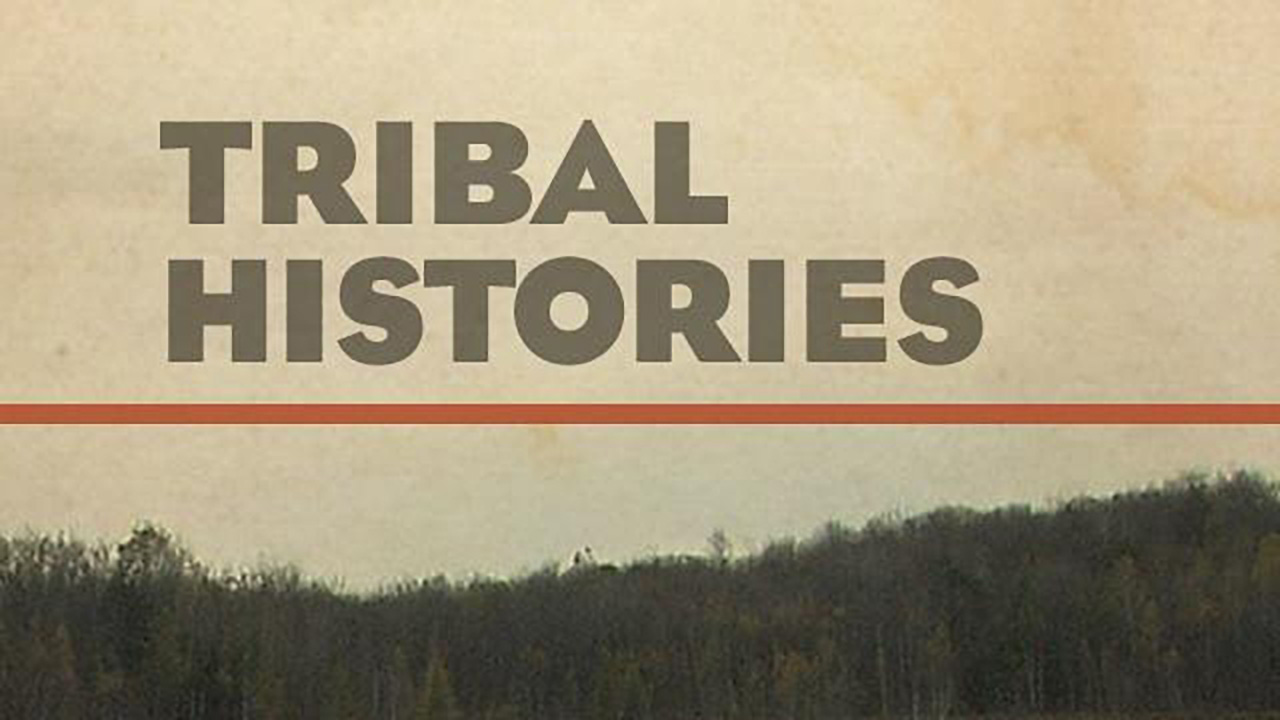





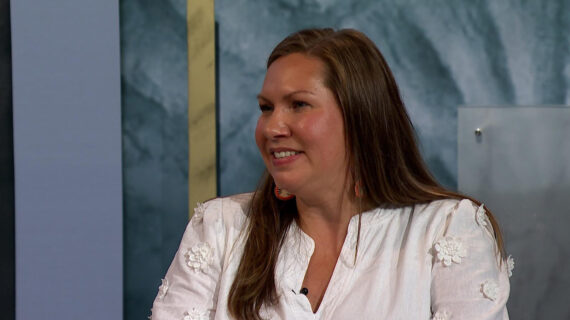
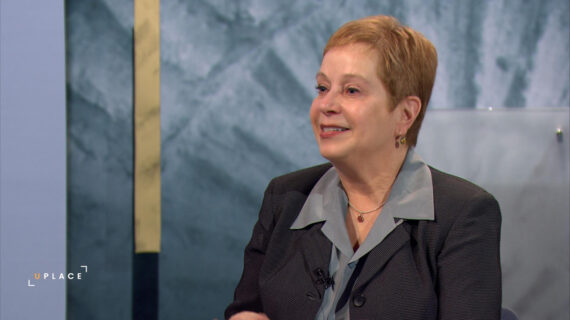

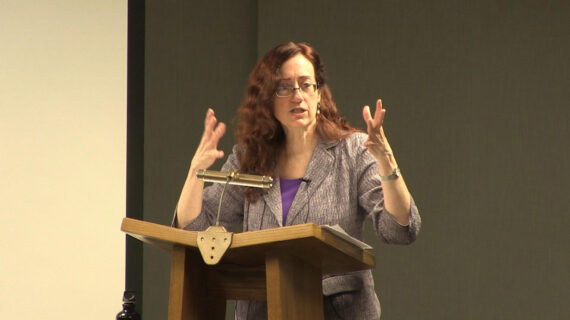



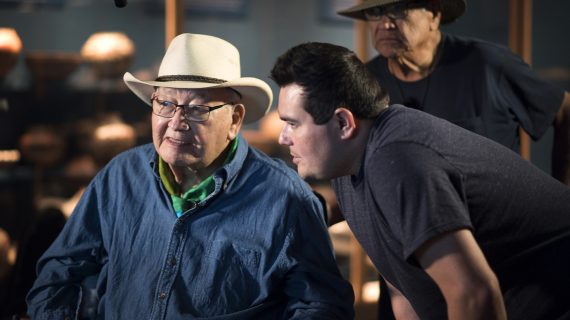


Follow Us